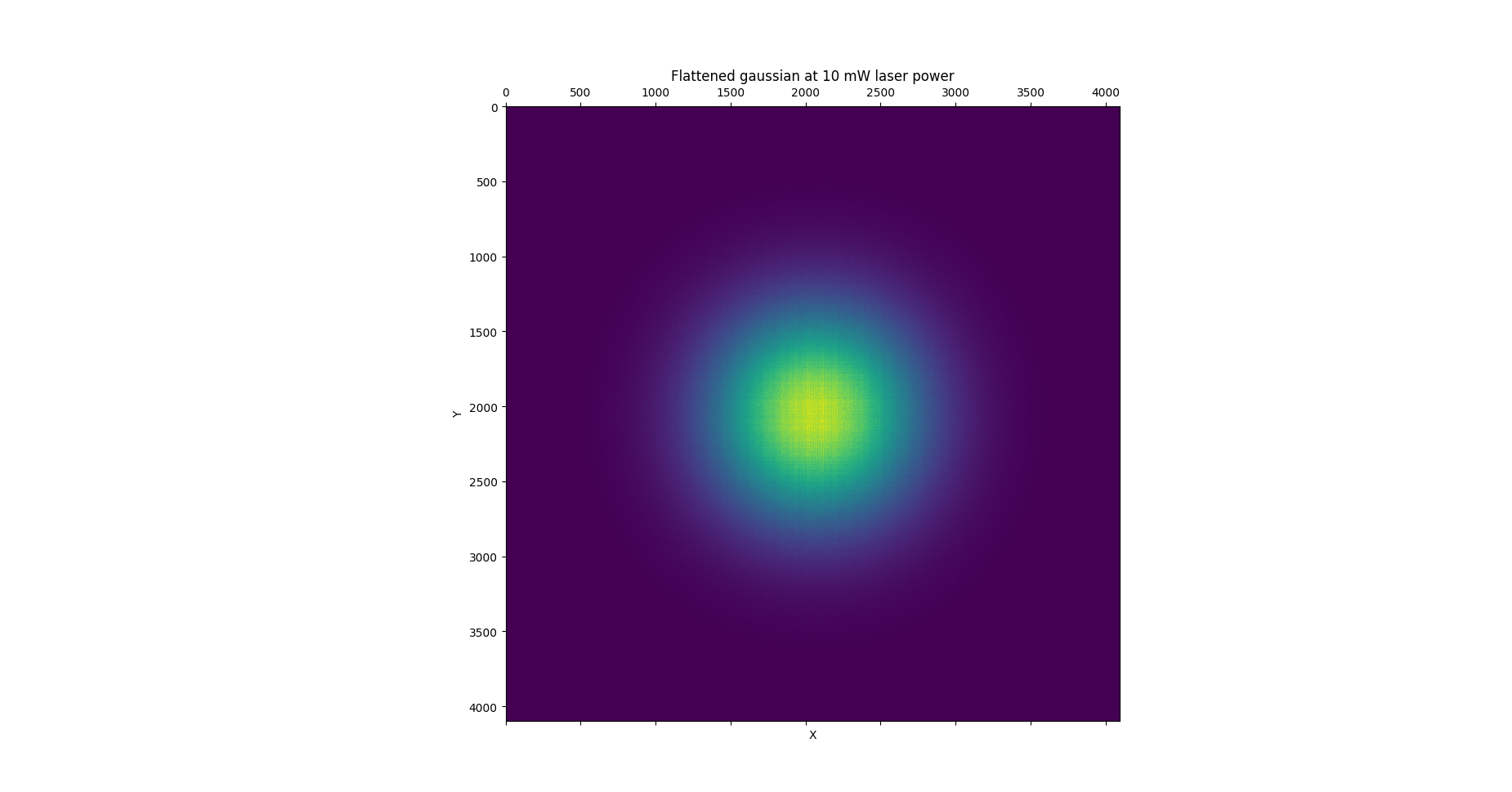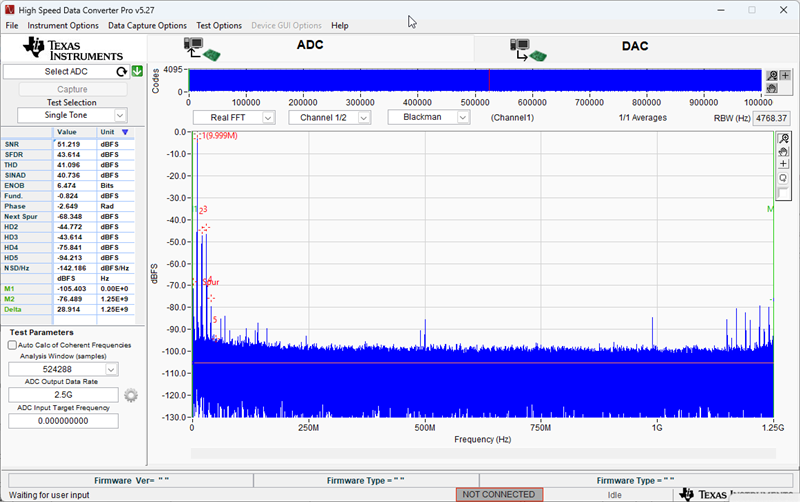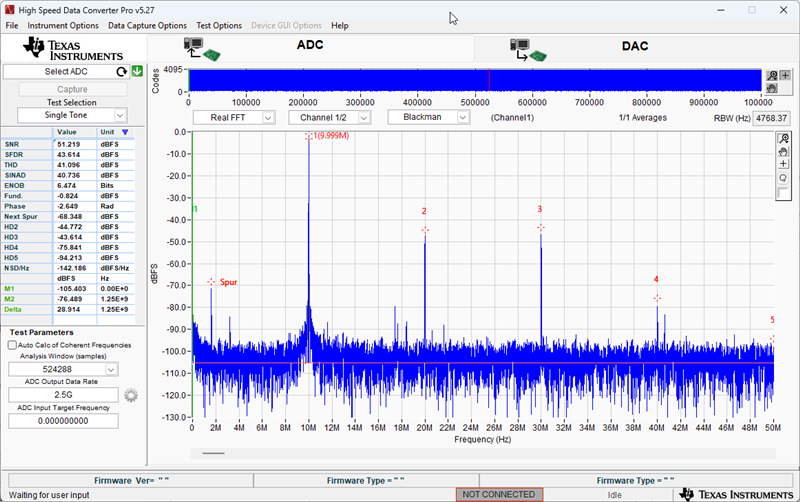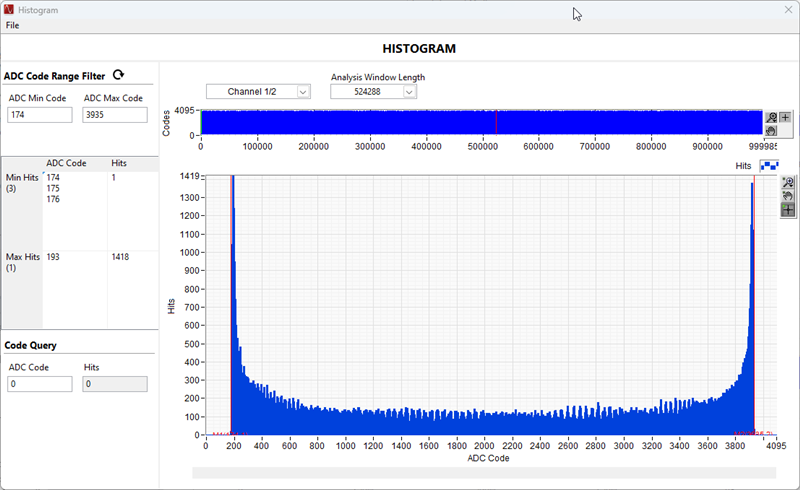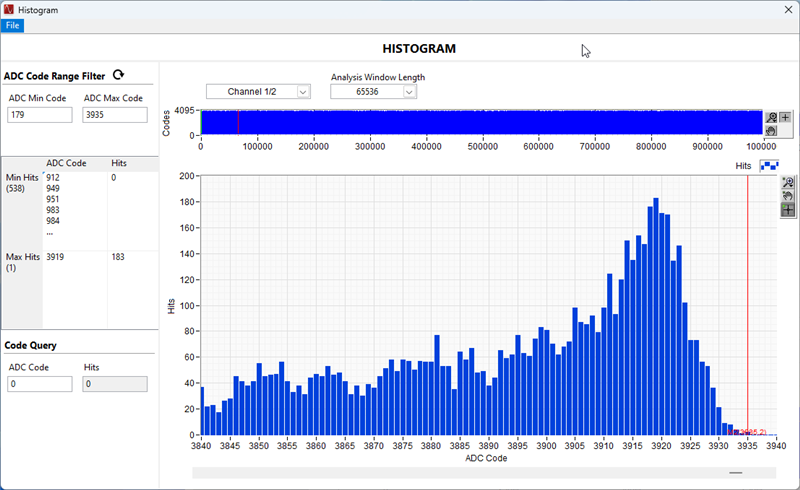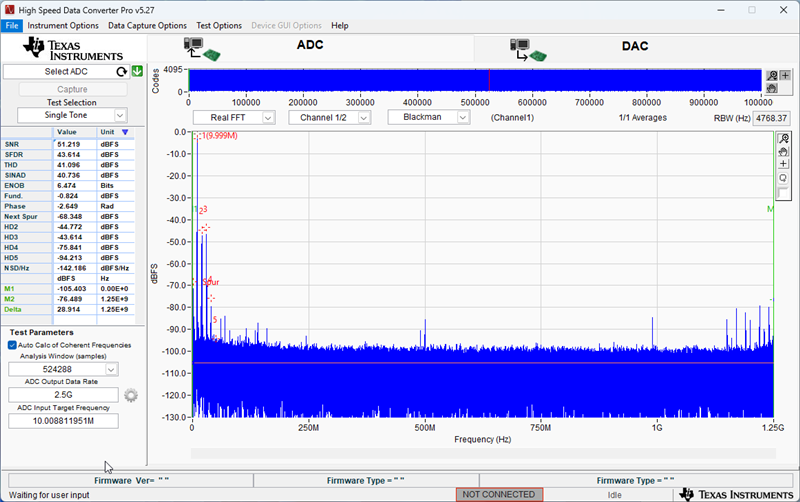Tool/software:
Hi all,
I am currently using the mentioned ADC together with a VCU118 FPGA to develop a quantum random number generator. Part of this is measuring the voltage of two photodiodes and creating a histogram. To be more specific, values are taken from both of the ADC channels and then the values are used as position in a 2D array, where the value at that position gets incremented by one, essentially forming a histogram.
With the current experimental set up, I am expecting to see a Gaussian, which is what I see, however, I am also seeing some lines forming both horizontally and vertically. The lines seem to be roughly spaced by values of 16, which corresponds to 4 bits and as I saw in the datasheet, the ENOB of the ADC is approximately 8 bits. Could this be due to ENOB? I also took the same ADC values, right shifted them by 4 and then plotted the same histogram, at which point the Gaussian looked fine, without any lines.
I have checked the transport layer, the data I am receiving looks to be fine without any discontinuities. I am transferring data from the FPGA to the PC over PCIe. The only discontinuities I see in the received signal are caused by PCIe implementation on the FPGA not being completely continuous, however, that should not impact the histogram in any meaningful way. I have also taken a look at the same histogram plot with the ADC connected to sine wave generators, they also showed the same patterned lines.
Please let me know whether this is just an intrinsic quality to the ADC or whether I am doing something wrong. I have attached a picture of the histogram (and a zoomed version) to show the lines. Thank you for the help!